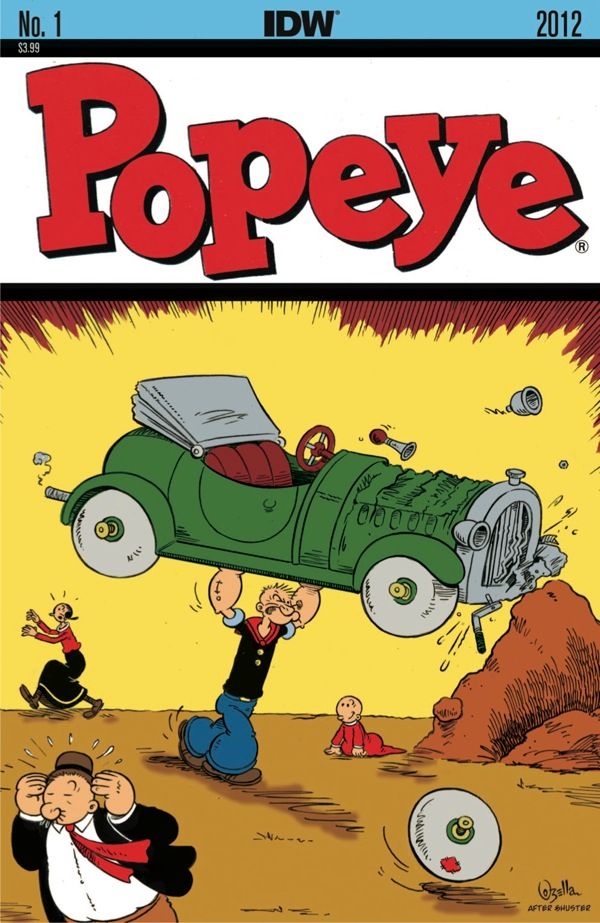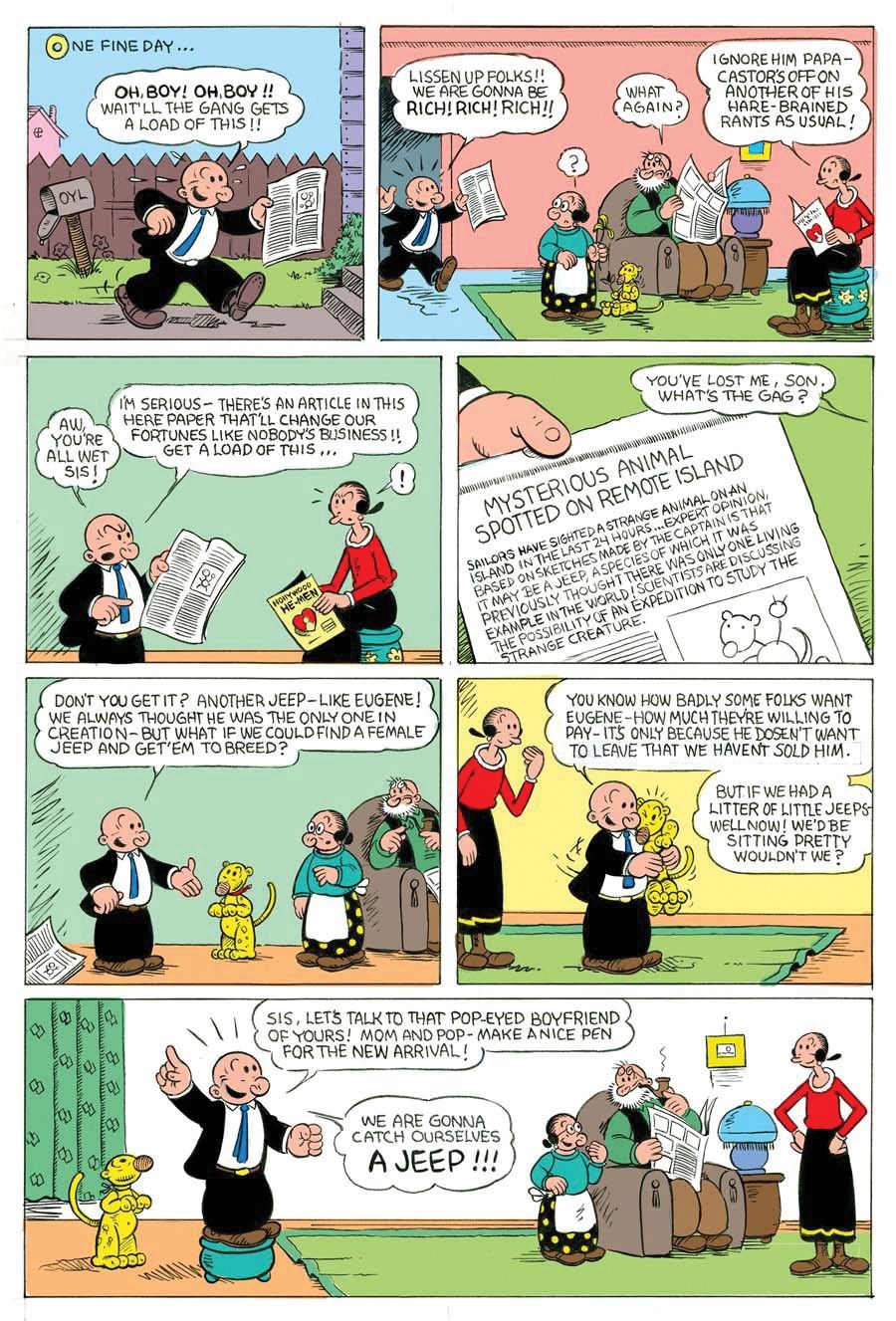This week Fantagraphics shipped Popeye Vol. 6: Me Little Swee’Pea, the final book in the publisher’s thorough collection and handsome representation of the entirety of E.C. Segar’s comic strip starring the immortal, iconic sailor character.
So once that book has been read and enjoyed, what is an insatiable Popeye fan to do then?
Well, I’m glad I asked myself that, because it provides a perfect segue into IDW’s Popeye #1, which also shipped this week.
Like BOOM!’s recent Peanuts comics, there’s an aura of superfluity about the endeavor: Does the world need more, Segar-less Popeye comics when there are so many hundreds of pages of Popeye comics by Segar so easily available?
I honestly don’t know, and I suspect the answer to that question varies from potential reader to potential reader.
Certainly plenty of Segar-less Popeye narratives in various other media already exist, and certainly the character is familiar to folks around the world who may have never read a single one of the great cartoonist’s strips, thanks to decades worth of animated cartoons, a few video games and that Robin Williams movie.
Here’s something I do know, though: If there are going to be new Popeye comics, then I hope they are all as good as Popeye #1.
IDW’s certainly assembled a team you can trust. It’s written by cartoonist Roger Langridge, responsible for scripting Marvel’s Thor: The Mighty Avenger and writing and drawing BOOM!’s short-lived Muppet Show comic, in addition to creating his own books like Snarked and Fred The Clown. It’s drawn by Bruce Ozella, whose character designs are so close to Segar’s that Ozella could probably pull off a pretty good forgery, if he cared to. The artist also handles the letters, again sticking to a Segar style.
One of the three editors is Craig Yoe, who has previously edited a collection of artist Bud Sagendorf’s Popeye comics of the 40s and 50s, and who knows a thing or 23 about classic cartoons.
And they even got Jules Feiffer—Jules Feiffer!—to provide a variant cover.
While this is a comic book, its narrative is structured as something of a hybrid between a comic strip and a comic book. Each page is its own distinct scene, and reads a bit like a Sunday strip, with a beginning, middle and climactic end. The book tells a single “done-in-one” story, but it reads like an entire—and somewhat epic—story arc (especially by today’s comic book standards), and feels a little like a collection.
The panels, which are mostly horizontal rectangles, run across a strict four-tier page structure, only occasionally broken for “splashes” that consist of a single panel occupying two of the four tiers. The focus is always in a comic-strip like long-ish medium shot, allowing us to see the entire figure in almost every panel, and the creators eschew close-ups and strange, un-comic strip-like angles.
It is in rather bright, brilliant color, however, albeit with a limited old-school palette that befits the classic, timeless feel of the endeavor: You can’t tell what year the adventure takes place in from any markers in the book. It could be 2012, or it could be 1922.
The story is full of little call-backs to the original strips, which, when combined with Ozella’s fealty to Segar’s style, gives the impression that this is a book for grown-up fans of the comic strip, although it is an all-ages adventure of the sort it’s not hard to image young readers eating up. There’s probably a bit more violence than you’d find in a comic made specifically for 21st century children, but then, that gives it a daring, transgressive quality.
That story is this: Castor Oyl reads about the discovery of an island with a Jeep on it, and excitedly announces his latest get rich quick scheme to Olive and their parents: If they can catch a Jeep, the can perhaps breed it with their previously thought to be one of a kind Jeep Eugene, and sell the progeny.
They convince Popeye to sail them there, Wimpy joins them, they run afoul of first Bluto and the Sea Hag and then ultimately discover whether or not there’s a Jeep to be found. There’s a lot of punching.
How many more Segar-less Popeye comics the world needs isn’t any easier a question than whether the world needs any, really, although it should be interesting to see how long Langridge and Ozella can keep this up. Was this first issue great mainly because it was such a good pastiche, or can an entire run of comic books replicate an big chunk of Segar’s comic strips? Will they be able to add something new, or some of themselves, in the future?
At the very least, this first issue is excellent, and I suppose if all more Popeye does is introduce more readers, including younger readers, to one of the greatest comic strips of all time by one of the greatest cartoonists of all time, then what might at first seemed superfluous may actually turn out to be indispensable.



